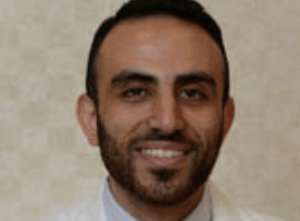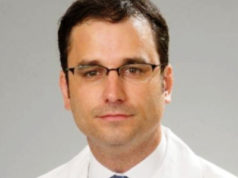
Endovascular aneurysm repair (EVAR) for abdominal aortic aneurysms (AAAs) in those 80-plus decreases one-year mortality rates compared to non-operative management, researchers at the University of Texas (UT) Southwestern Medical Center in Dallas found.
Working from a cohort of 11,829 patients who met study criteria, Mitri Khoury, MD, a general surgery resident at the institution, et al found that while the predicted one-year mortality rate without EVAR was 14.6%, the actual rate was “significantly higher” with EVAR at 10.6% (p<0.001). The overall rate of major adverse cardiac events (MACE)—the study’s secondary outcome—was 4.4%. The findings were delivered at the Southern Association for Vascular Surgery (SAVS) annual meeting held in Scottsdale, Arizona (Jan 27–30).
The research team carried out a retrospective review of the Vascular Quality Initiative (VQI) database of EVARs for AAA completed from 2003–2020. The cohort had a median age of 84, with 76.2% of them male. Some 4,681, or 39.6%, of the patients had an aortic diameter of less than 5.5cm. Another 10.6% had a diameter of 7cm or greater.
Khoury and colleagues used the Gagne Index to calculate the predicted one-year mortality from untreated AAA. This involved a validated co-morbidity score plus one-year aneurysm-related mortality without repair (one-year aortic rupture risk based on aneurysm diameter x 0.85).
Patients with a Gagne Index of 0–3 had significantly lower actual one-year mortality rates with EVAR compared to that predicted without repair, but the researchers found no significant benefit of EVAR for patients with a Gagne Index of 4 or more. That was also the case with patients who had a AAA size of less than 5.5cm, “so preference should be given to elderly patients with lower Gagne Indices and larger AAAs,” Khoury et al reported.
One-year survival for patients was regressed on a subset of variables, he said. Age, coronary artery disease, increasing AAA diameter, increasing Gagne Index and MACE were independent predictors of mortality in the elderly, the investigators found. By way of contrast, Khoury told SAVS, body mass index as well as aspirin and statin use were associated with improved survival.
He noted several limitations, starting with the “inherent biases” of a retrospective study. “In addition, we do not have specifics regarding the aneurysm anatomy,” he added. “As previous studies have shown, predicted one-year rupture risk based solely on diameter may not necessarily be completely accurate.”
Khoury further noted that the VQI dataset did not have a variable that allowed the researchers to determine if patients had metastatic cancer, “which is worth a total of five points in the calculation of the Gagne Index and can lead to a large underestimation of a patient’s one-year survival.
“However, patients with metastatic cancer would likely only represent a very small cohort in the study focused on elective EVARs in elderly patients, and would not have a significant effect on the overall results.”
Providing further context to the study, Khoury later told Vascular Specialist: “The relative benefit of EVAR versus continued surveillance in the elderly is currently unknown. Nonoperative management of AAAs carries a substantial risk of rupture and subsequent death in the elderly since the majority of AAA ruptures occur in patients 75 years of age or older.
“To further complicate decision-making, life expectancy decreases with advancing age, which may nullify the benefit of EVAR. Thus, it is currently unknown whether offering repair to those of advanced age improves overall mortality. The purpose of this study was to quantify the impact of EVAR on one-year mortality in the elderly by comparing the actual one-year mortality after EVAR to the predicted one-year mortality without repair.”












